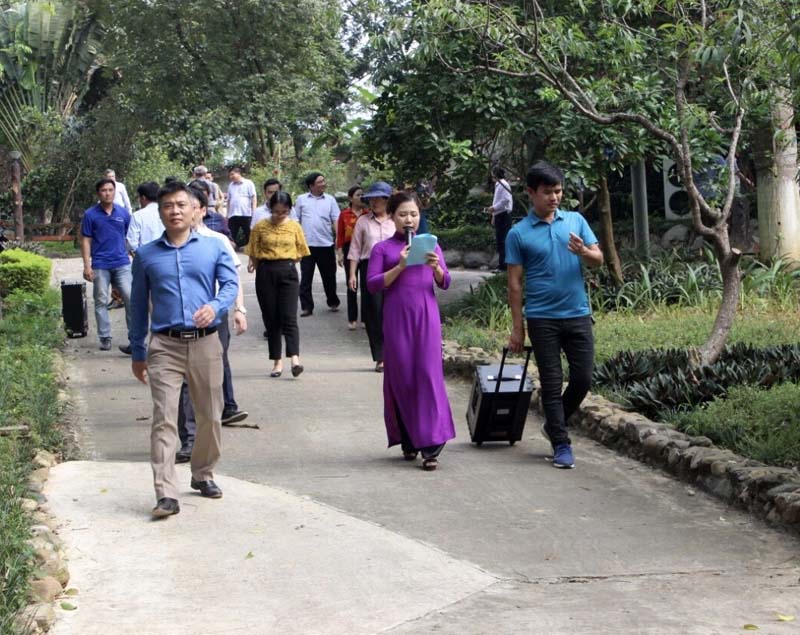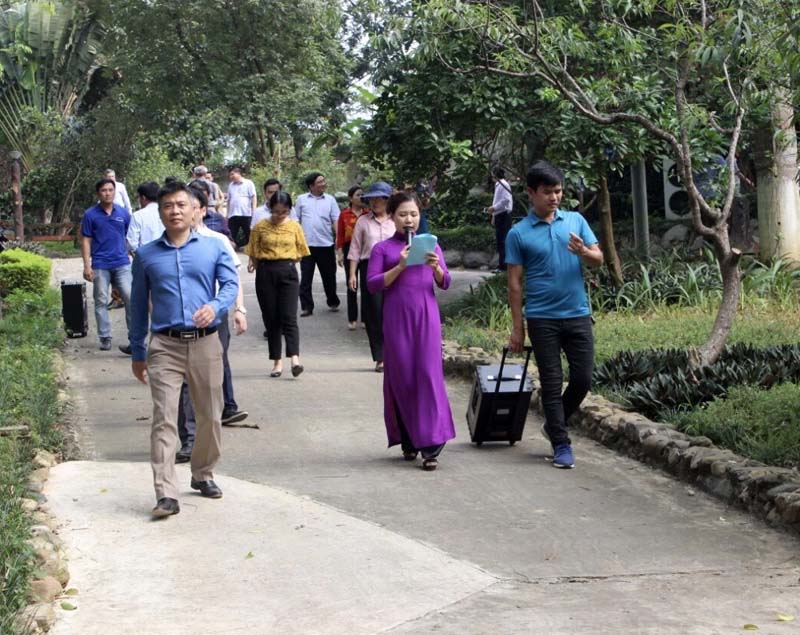
(HBO) – Dong Goi eco-resort in Hoa Son commune, Luong Son district, Hoa Binh province, is located on a hillside and next to beautiful hamlets surrounded by rice fields and tree hills. It has become an ideal countryside getaway for tourists.
 Dong Goi eco-resort in
Hoa Son commune, Luong Son district, is an ideal destination for tourists in
and outside Hoa Binh province.
Dong Goi eco-resort in
Hoa Son commune, Luong Son district, is an ideal destination for tourists in
and outside Hoa Binh province.
The
3.6ha eco-resort, nearly 40km from Hanoi’s centre and 30km from Hoa Binh city, was
put into operation in 2013. There are four separate villas with 20 rooms that
combine traditional and modern design styles.
The
resort uses the ozone technology to treat mineral water at hundreds of metres inside
the mountains to serve a four-season swimming pool, daily activities as well as
agricultural production.
Tourists
can also spend time relaxing in a spa that provides herb-based services and
steam rooms, and playing tennis.
The
organic farming model has been seen as the spotlight of the complex as it makes
up two thirds of total area there, providing various types of vegetables, along
with chicken, pigs, ducks and fish.
The
complex also includes a museum featuring culture of the Muong ethnic group
through their household utensils, costume and production tools. Besides,
holiday-makers can enjoy the group’s traditional dishes, join Muong dances
around the fire and drink ruou can (wine stored in a big jar and drunk with
long bamboo straws)./.
A diverse chain of eco-tourism and resort destinations concentrated in Hoa Binh city and the districts of Tan Lac, Da Bac, and Luong Son… Along with the launch of several key high-quality resort tourism projects, these developments have reshaped the landscape and enhanced the appeal of Hoa Binh as a travel destination.
Boasting diverse terrain, a mild climate, and rich natural resources, Cao Phong district is increasingly asserting its place on Vietnam’s tourism map, attracting both domestic and foreign visitors. The district is renowned for its stunning landscapes, majestic mountains, a crystal-clear hydropower lake, and the unique cultural identity of local ethnic groups.
With its pristine landscapes, unique cultural heritage of Muong ethnic minority, and an expanding range of visitor experiences, Tan Lac district of Hoa Binh has fast become a captivating destination for both domestic and international tourists.
Until now, Sung village in Cao Son commune, Da Bac district remains the only Dao ethnic community in Hoa Binh province to develop a community-based tourism model. Beyond its untouched natural landscapes, cultural identity serves as the cornerstone attraction for visitors.
Alongside the diverse cultural identities of the Kinh, Muong, Tay, Thai, Dao, and Mong ethnic people, Hoa Binh province is also renowned as the "capital" of the northwestern Vietnamese cuisine, offering unique and distinctive dishes. At festivals, during Lunar New Year (Tet), or on significant family or community occasions, special dishes are prepared, leaving a lasting impression on visitors.
A Phong Linh (Yellow Tabebuia) flower garden in Thang village, Thach Yen commune, Cao Phong district is currently in full bloom, drawing a large number of visitors.



 Dong Goi eco-resort in
Hoa Son commune, Luong Son district, is an ideal destination for tourists in
and outside Hoa Binh province.
Dong Goi eco-resort in
Hoa Son commune, Luong Son district, is an ideal destination for tourists in
and outside Hoa Binh province.